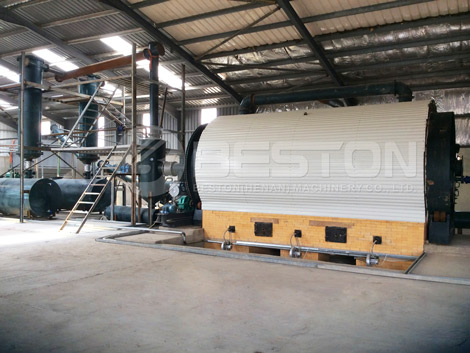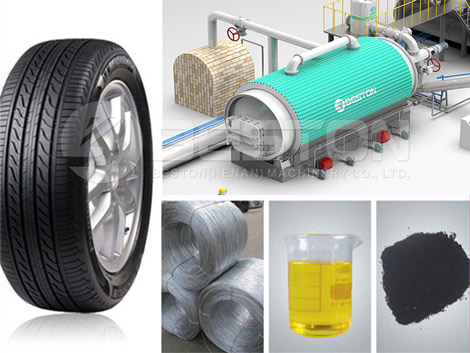This modern society is constantly mobile, and under the cars, trucks and trailers that keep goods and services operating to suit the needs of a global populace, are tyres. Big tyres, little tyres, tyres everywhere are being used and worn down and finally discarded. Once a tyre is no longer usable due to its worn treads, it often ends in a landfill and adds to a growing ecological hazard across the world.
But, sequestered in this rubbery menace, the rubber waste problem in the world holds keys to maximizing resource efficiency and solving waste problems as well. In the following article we will take a closer look at how old tyres and many types of rubber waste can be recycled and repurposed as useful fuels and other materials. The tire pyrolysis plant can dispose of waste tire effectively.

Waste Tyre Pyrolysis Plant
The Advantages of a Pyrolysis Plant
With over 300 million types being thrown away each year an abundant source of fuel and materials has been made open. Improperly disposed of tires are a larger and larger problem, especially since landfills are no longer accepting these waste products into their process. Unwanted tyres no end up in large unsightly stacks in vacant lots or even worse in rivers, lakes and fields where they leach toxins into the soil and add create breeding grounds for mosquito populations.
This is where an intelligent plan to put all these unwanted tyres to good use in addressing the tyres filling nature and urban areas. Through the process of pyrolysis in a tyre pyrolysis plant, tyres can be used again and serve a new purpose. See this website: https://bestonpyrolysisplant.com/waste-tyre-recycling-plant/.
It may surprise you to know that there is more than just rubber in a tyre. Almost 40% of the tire is actually other salvageable minerals that can be removed from the tyres structure before the small chips are prepared for the machine. Once everything useful has been removed from rubber waste and tyres, these materials can be cut into smaller chunks and fed to the tyre pyrolysis plant.

Tire to Oil Machine
The Pyrolysis Process
The rubber inside the pyrolysis plant will subjected to high temperatures without oxygen. Essentially it will be burned with no oxygen to aid the fire. This leads to chemical changes that alter the chemical components of the tyres. For example, the polymers within the type will be evaporated and collected. When condensed, these polymers form an oily liquid called “Biofuel”. Other products include carbon black which can be repurposed for new tyres and also has applications in the ink and pigment industry.
In Conclusion
While rubbers are an essential part of our society and there is not much that can done immediately to reduce their emphasis, a tyre pyrolysis plant is a great way to mitigate the harshness of environmental impacts of improper waste. Furthermore, the pyrolysis plant will pay for itself and then some in the form of useful valuable materials.